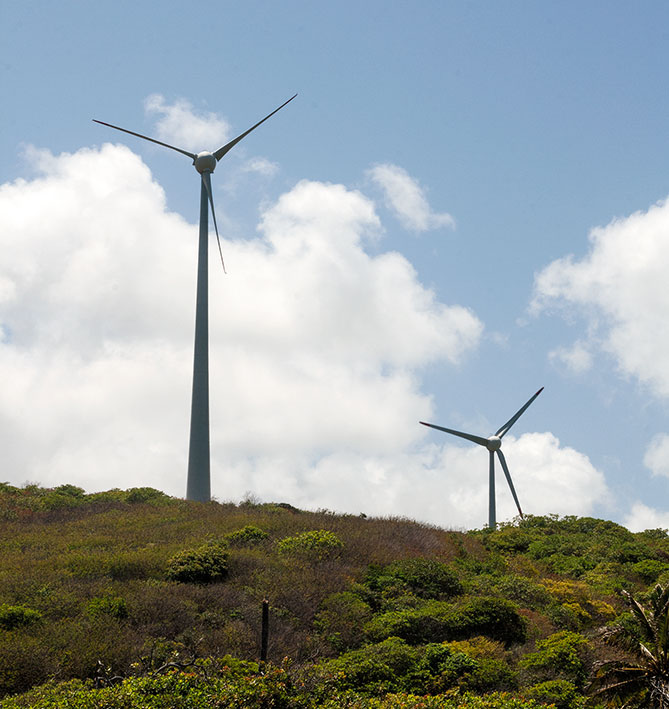Revista Retratos
Clean energy impacts GDP of Northeastern municipalities
August 28, 2019 03h40 PM | Last Updated: August 30, 2019 10h25 AM

Wind energy makes energy matrix more sustainable - Photo: Licia Rubinstein/IBGE News Agency
With the increasing participation of wind and solar energies, the Brazilian energy matrix has been becoming even more sustainable. According to the Brazilian Energy Balance 2018 of the Energy Research Office - EPE, the Northeast has been standing out by concentrating nearly 80% of the wind towers in Brazil, as well as countless solar panels (photovoltaic).
Even before generating this type of energy, the implementation of the infrastructure significantly changes the routine in the cities, by changing the land use, producing local jobs and attracting investments in services for the workers.
It is the case of Gentio do Ouro and Tabocas do Brejo Velho, in Bahia. The two cities have several things in common: both of them are located in the interior of the state, near the border with Pernambuco, they are considered small cities (with 11.2 thousand and 12.5 thousand inhabitants, respectively) and had their economies completely based on agriculture up to 2015.
However, things began to change in 2016. With heavy investment in the local industry for the construction of wind installations and equipment, Gentio do Ouro´s share in the national GDP increased from the 4496th position to the 2491st position among the Brazilian municipalities.

In Tabocas do Brejo Velho, the installation of solar panels increased the tax collection on imports, which also changed the economic dynamics of this municipality, by jumping from the 3986th position to the 2432nd position in the national ranking.
"The Gentio do Ouro and Tabocas do Brejo Velho cases reflect the increase in the importance of the wind and solar sources in the energy matrix and the investments that are being made in those segments in Brazil", explained Luiz Antonio de Sá, expert of the IBGE department of Regional Accounts.
Also according to the expert, the wind power stations were the third major energy source in Bahia in 2016, behind hydroelectric and thermoelectric plants. In 2017, they moved to the first position in the state ranking.
SDG 7: renewable and clean energies
In the Retratos Magazine no. 14 (December 2018), the series on the Sustainable Development Goals - SDG discussed SDG 7: renewable and clean energies. The interview was made with the IBGE experts in charge of the articulation of this SDG in Brazil, Michel Lapip and Flavia Cahete.
They explained that the challenge involved in the SDG 7 is to move to an economy in which electricity is more accessible, though using more renewable sources. According to the experts, the Brazilian energy matrix is already based on renewable and clean energies, like that produced in hydroelectric plants, from biomass (sugarcane) and wind energy. Nevertheless, most of the greenhouse gas emissions still come from the production of energy, like those generated from petroleum and derivatives, firewood and coal.
Check the full story in the Retratos Magazine no. 14



















